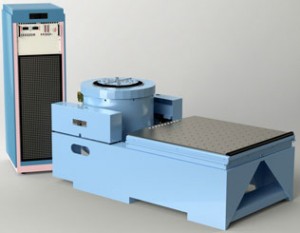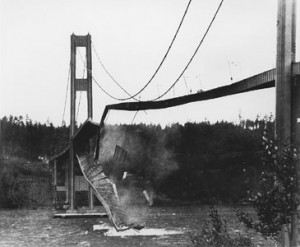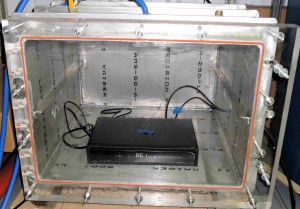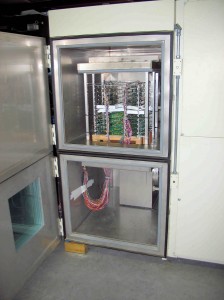DES recently performed package testing per ASTM standard, ASTM D7386-12.
Continue reading ASTM D7386-12 Package Testing →
DES recently performed package testing per ASTM standard, ASTM D7386-12.
Continue reading ASTM D7386-12 Package Testing →
Part 2 – Selecting a Lab and Performing Your Test
If you have not done so yet, please check out Part 1 – Defining your project and Obtaining a Quote.
You obtained quotes from a couple of vibration test labs. Your next task is to select a vibration test lab to perform your vibration test. Your selection should not be based upon price alone. Factors that should affect which lab you choose are capability, cost, timing, location, quality, and other special requirements.
Continue reading Choosing A Vibration Test Lab Part 2 →
Part 1 – Defining your project and Obtaining a Quote
Vibration testing is a very specialized field, not very well understood by many. There are different types of vibration and there are an enormous number of vibration test specifications. Vibration testing equipment is very expensive to purchase forcing many companies to hire a vibration test lab to fulfill their vibration testing requirements. So what should you expect when Choosing A Vibration Test Lab?
Continue reading Choosing A Vibration Test Lab Part 1 →
Mixed Mode Vibration Testing is less common than Sinusoidal and Random Vibration Testing. However, it does have a special purpose for simulating specialized helicopter vibration or vibration from tracked vehicles such as tanks.
The three mixed modes of vibration testing are:
Some common test standards that have specifications for Mixed Mode Vibration Testing are:
Continue reading Mixed Mode: Sine on Random Vibration Testing, RoR, SoRoR →
A vibration resonance occurs when equipment or a product is exposed to an external forced vibration occurring at one or more of its natural frequencies. The resulting product response vibration is amplified and can be huge! Vibration resonances can cause severe damage to products and significantly shorten their life. Examples of vibration resonances can be seen below and in our video page.
A natural frequency is the frequency at which a system will oscillate after an external force is applied and then removed. All objects have a natural frequency at which they vibrate. Most products have many natural frequencies.
Continue reading What is a Vibration Resonance? →

Vibration of a mechanical system can be descried as an oscillatory motion about an equilibrium point. Certain vibrations of mechanical systems can be considered desirable, such as in musical instruments like a tuning fork or guitar.
However, often times vibrations of mechanical systems are undesirable, producing wasted energy, unwanted noise and catastrophic failures. Therefore it is critical during the product design phase that engineers are able to accurately characterize the vibration response of the system in order to ensure a safe and reliable product for their customers. We accomplish this through comprehensive vibration testing services.
Continue reading Vibration Response of Products →
Shock testing with long durations can be a challenging endeavor. DES recently had to perform a 35G peak, half sine shock with a 50 millisecond duration. The video below shows this shock test being performed.
This sounds like an easy shock to carry out because a peak of 35G is low compared to many shocks. However, this is a difficult shock to perform because 50 milliseconds is a long duration. Most typical shock durations are less than 20 milliseconds.
A half sine shock impulse has the shape of a half sine wave. More details can be found elsewhere on our blog, in an article titled “Classical Shock Testing“.
Continue reading Shock Testing: Long Duration Half Sine Shock →
 Altitude (Low Pressure) Testing makes use of a vacuum chamber to simulate the effects of high altitude conditions. The pressure inside the altitude chamber can be reduced to correspond to the air pressure at a specific altitude. Products can be placed inside the altitude chamber and tested to determine if they will still function after exposure to a given duration at a specified altitude.
Altitude (Low Pressure) Testing makes use of a vacuum chamber to simulate the effects of high altitude conditions. The pressure inside the altitude chamber can be reduced to correspond to the air pressure at a specific altitude. Products can be placed inside the altitude chamber and tested to determine if they will still function after exposure to a given duration at a specified altitude.
Components sealed with internal fluid such as batteries or capacitors may fail or leak during altitude testing because an internal pressure results at rising altitudes as the external pressure is reduced. It is also possible to power a product during the test to verify that it remains operational during the altitude test. The lower pressure at higher altitudes can reduce the cooling of components which can lead to possible failures. For this type of testing, it is necessary to have power and signal wires that can be fed into the altitude chamber without causing vacuum leaks. DES can provide a generic feed through that can be used for most testing. A custom feed through can also be fabricated if the component to be tested has specialized power or signal cables. It will be necessary to seal these cables to maintain the low pressure.
Continue reading Altitude Testing: Low Pressure Vacuum Chamber →
 Thermal shock testing also called temperature shock testing or temperature cycling exposes products to alternating low and high air temperatures to accelerate failures caused by repeated temperature variations during normal use conditions. The transition between temperature extremes occurs very rapidly during thermal shock testing, greater than 15 °C per minute. Alternatively, temperature cycle testing uses slower rates of change between high and low temperatures. The failure acceleration rate for thermal shock testing is determined by the Coffin-Manson equation as previously discussed in DES’s blog article Temperature Cycling Testing: Coffin-Manson Equation.
Thermal shock testing also called temperature shock testing or temperature cycling exposes products to alternating low and high air temperatures to accelerate failures caused by repeated temperature variations during normal use conditions. The transition between temperature extremes occurs very rapidly during thermal shock testing, greater than 15 °C per minute. Alternatively, temperature cycle testing uses slower rates of change between high and low temperatures. The failure acceleration rate for thermal shock testing is determined by the Coffin-Manson equation as previously discussed in DES’s blog article Temperature Cycling Testing: Coffin-Manson Equation.
Equipment with single or multiple chambers may be used to perform thermal shock testing. When using single chamber thermal shock equipment, the products or samples remain in one chamber and the chamber air temperature is rapidly cooled and heated. This usually results in a slower rate of change in the product response temperature as the entire chamber must be cooled down and heated up. However larger products can be tested in single compartment chambers. Some equipment uses separate hot and cold chambers with an elevator mechanism that transports the products between two or more chambers. This results in a more rapid rate of change in the air temperature. However, there is a limit to the size and weight than can be put in a chamber with an elevator mechanism. DES has both types of chambers for thermal shock testing.
Continue reading Thermal Shock Testing – Temperature Cycling →
 Delserro Engineering Solutions (DES) was proud to be a part of the recent Orion rocket that launched on December 5th 2014. DES was contracted by a local manufacturer to help qualify their product designs for use on Lockheed Martin’s Orion rocket. DES’s role was to perform specialized shock testing on their products.
Delserro Engineering Solutions (DES) was proud to be a part of the recent Orion rocket that launched on December 5th 2014. DES was contracted by a local manufacturer to help qualify their product designs for use on Lockheed Martin’s Orion rocket. DES’s role was to perform specialized shock testing on their products.
Some of the shock levels were over 3200 G’s to simulate the rugged launch environment. Both the local manufacturer and Lockheed Martin Corporation were pleased with the testing. Their products successfully passed the shock tests at DES. They acknowledged DES’s role and informed DES that their products operated successfully during the launch!
What sets DES apart from other labs is our in depth experience and technical capability to understand and reproduce the most complicated vibration and shock profiles. DES continues to perform the most complex vibration and shock tests on products that are used in outer space, rockets, missiles, automotive & truck environments, military environments, hospitals, etc.